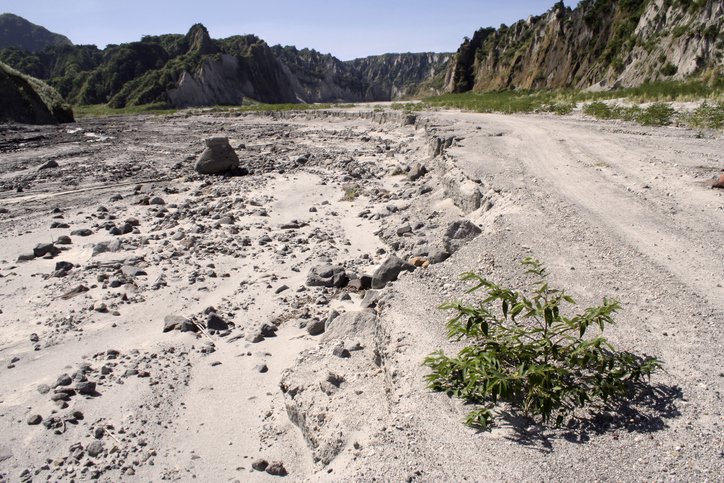Volcano: Mount Pinatubo
What do you remember about 1991? Maybe it’s watching Hook or Point Break - but many of us might remember the eruption of Mount Pinatubo. Tens to hundreds of times larger than the 1980 eruption of Mt. St. Helens, Mount Pinatubo’s 1991 eruption was the second largest volcanic eruption of the 20th century, superseded only by the 1912 eruption of Novarupta in a remote area of Alaska.

Image credit: Getty Images
Located in the Zambala Mountains on the Philippine island of Luzon, Mount Pinatubo rumbled to life about a year prior to the eruption. A 7.8-magnitude earthquake (comparable to the 1906 San Francisco earthquake) struck the area on July 16, 1990 about 60 miles northeast of the mountain. The earthquake caused a landslide, some steam emissions and a few subsequent tremors, but otherwise not much effect was felt.
In March and April 1991, however, rising magma from deep below the mountain triggered more earthquakes and huge steam explosions that blasted three new craters in the north flank of the mountain. During April, May and June, the area experienced thousands of additional earthquakes, as well as the emission of thousands of tons of noxious sulfur dioxide into the atmosphere.

Image Credit: Getty Images
Between June 7 and 12, magma reached the surface, oozing out to form a lava dome at the summit. By June 15, massive amounts of highly explosive gas-charged magma had reached the surface, and the volcano exploded, ejecting over one cubic mile of material, including an ash cloud that rose 22 miles into the atmosphere. A blanket of volcanic ash and pebbles covered the countryside, and satellites tracked the ash cloud several times around the globe. Huge pyroclastic flows (hot ash, gas and pumice) roared down the mountain filling the valleys with as much as 600 feet of fresh volcanic deposits.
The climactic eruption of Mount Pinatubo injected about 15 million tons of sulfur dioxide high into the atmosphere, and strong winds carried the material rapidly around the world. The Pinatubo sulfur dioxide cloud was the largest cloud of its kind observed since satellite observations began in 1978. This immense cloud of ash and sulfur dioxide reacted with water vapor to form a hazy layer of particles (called “aerosols”) that blocked incoming solar radiation. Because it was so high in the atmosphere, it did not get washed out by rainfall, causing it to circulate around the globe for several years. As you might guess, this reduction in the amount of energy reaching the Earth’s surface impacted global climate.

Red sunset over Hawaii influenced by eruption of Mt. Pinatubo. Image credit: Getty Images.
For the three years following the eruption, the Earth’s surface cooled by around 1°F, and we even felt its effects here in Virginia. In 1992, Richmond had its 4th coldest May, 9th coldest June and 6th coldest August on record. So, you see, a little-known volcano over 8,000 miles away can have profound effects on our day-to-day lives here in Virginia. Although Pinatubo is currently quiet, it is still an active volcano and closely monitored by scientists. The 1991 eruption could have caused major losses, but scientists had predicted the eruption far enough in advance to allow residents to evacuate, saving thousands of lives and millions of dollars in property.
To learn more about how Pinatubo affected Earth’s climate and how scientists used its eruption to better understand how our climate models perform under different “climate forcing,” read about it here.
Love volcanoes? Learn more about volcanoes' awesome power of creation in Volcanoes: The Fires of Creation now showing in the Dome.